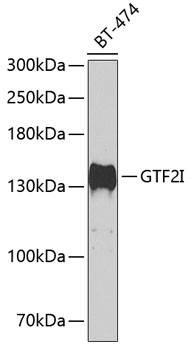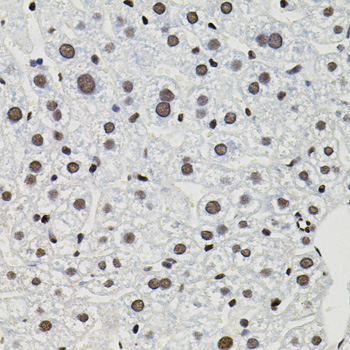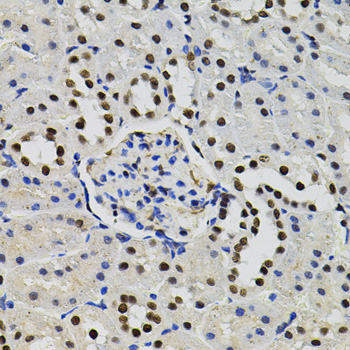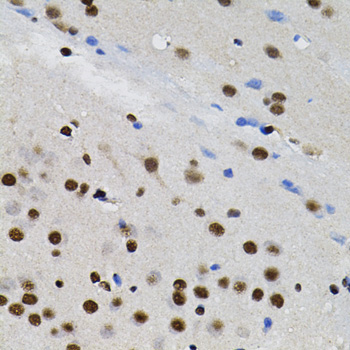Product Detail
Product NameGTF2I Rabbit Polyclonal Antibody
Host SpeciesRabbit
ClonalityPolyclonal
IsotypeIgG
PurificationAffinity purification
ApplicationsWB,IHC
Species ReactivityHuman,Mouse,Rat
Immunogen DescA synthetic peptide of human GTF2I
ConjugateUnconjugated
Other NamesGTF2I;BAP135;BTKAP1;DIWS;GTFII-I;IB291;SPIN;TFII-I;WBS;WBSCR6
Accession NoUniprot:P78347
GeneID:2969
Uniprot
P78347
Gene ID
2969
Calculated MW30kDa/107kDa/110kDa/112kDa
Sdspage MW132kDa
FormulationPBS with 0.02% sodium azide,50% glycerol,pH7.3.
StorageStore at -20˚C. Avoid freeze / thaw cycles.
Application Details
WB 1:500 - 1:2000
IHC 1:100 - 1:200
Western blot analysis of extracts of BT-474 cells, using GTF2I antibody.
Immunohistochemistry of paraffin-embedded human esophagus using GTF2I antibody.
Immunohistochemistry of paraffin-embedded mouse liver using GTF2I antibody.
Immunohistochemistry of paraffin-embedded rat kidney using GTF2I antibody.
Immunohistochemistry of paraffin-embedded rat brain using GTF2I antibody.
Western blot analysis of extracts of mouse brain, using GTF2I antibody.
This gene encodes a phosphoprotein containing six characteristic repeat motifs. The encoded protein binds to the initiator element (Inr) and E-box element in promoters and functions as a regulator of transcription. This locus, along with several other neighboring genes, is deleted in Williams-Beuren syndrome. There are many closely related genes and pseudogenes for this gene on chromosome 7. This gene also has pseudogenes on chromosomes 9, 13, and 21. Alternatively spliced transcript variants encoding multiple isoforms have been observed.
If you have published an article using product 55364, please notify us so that we can cite your literature.








 Yes
Yes



